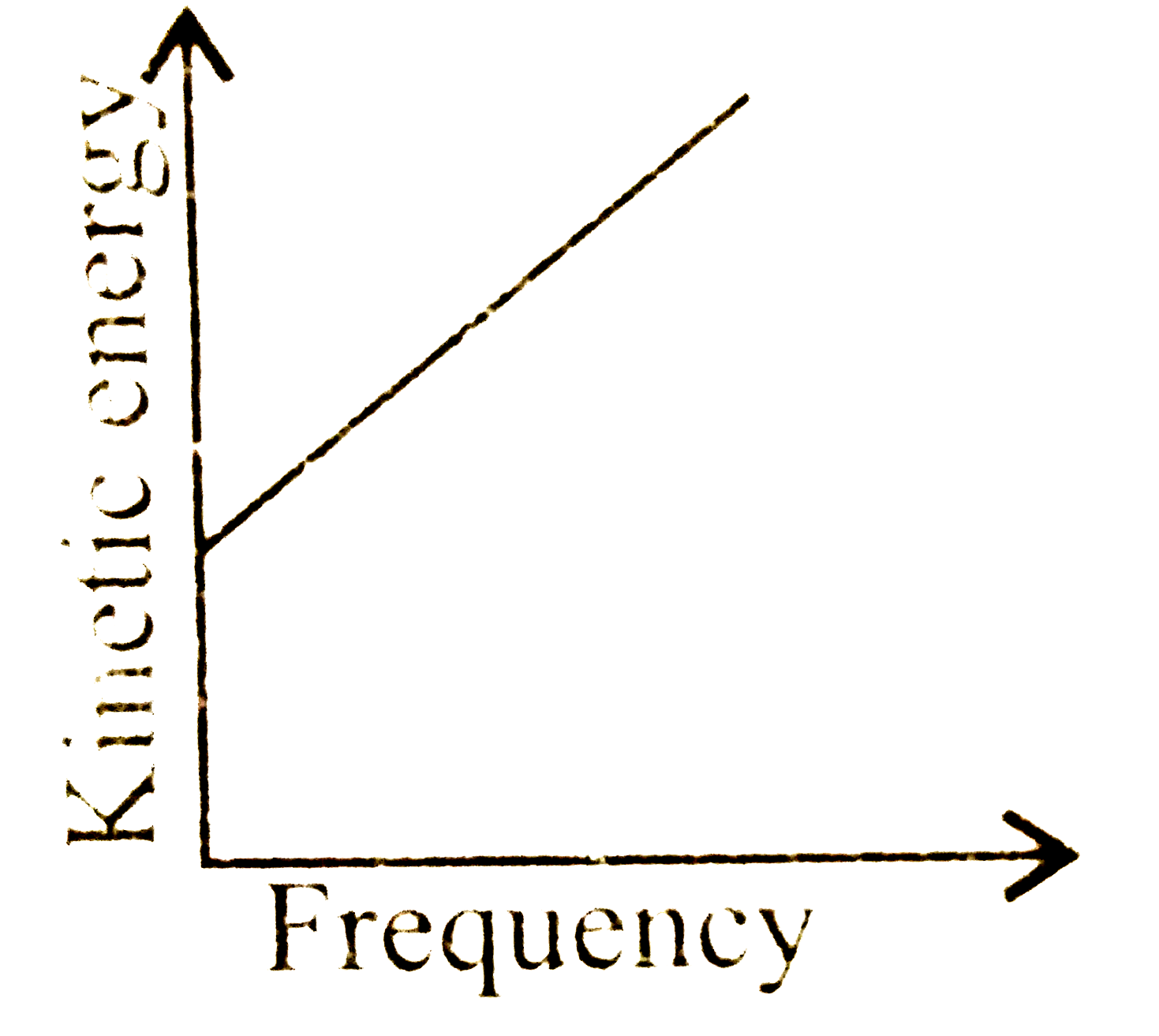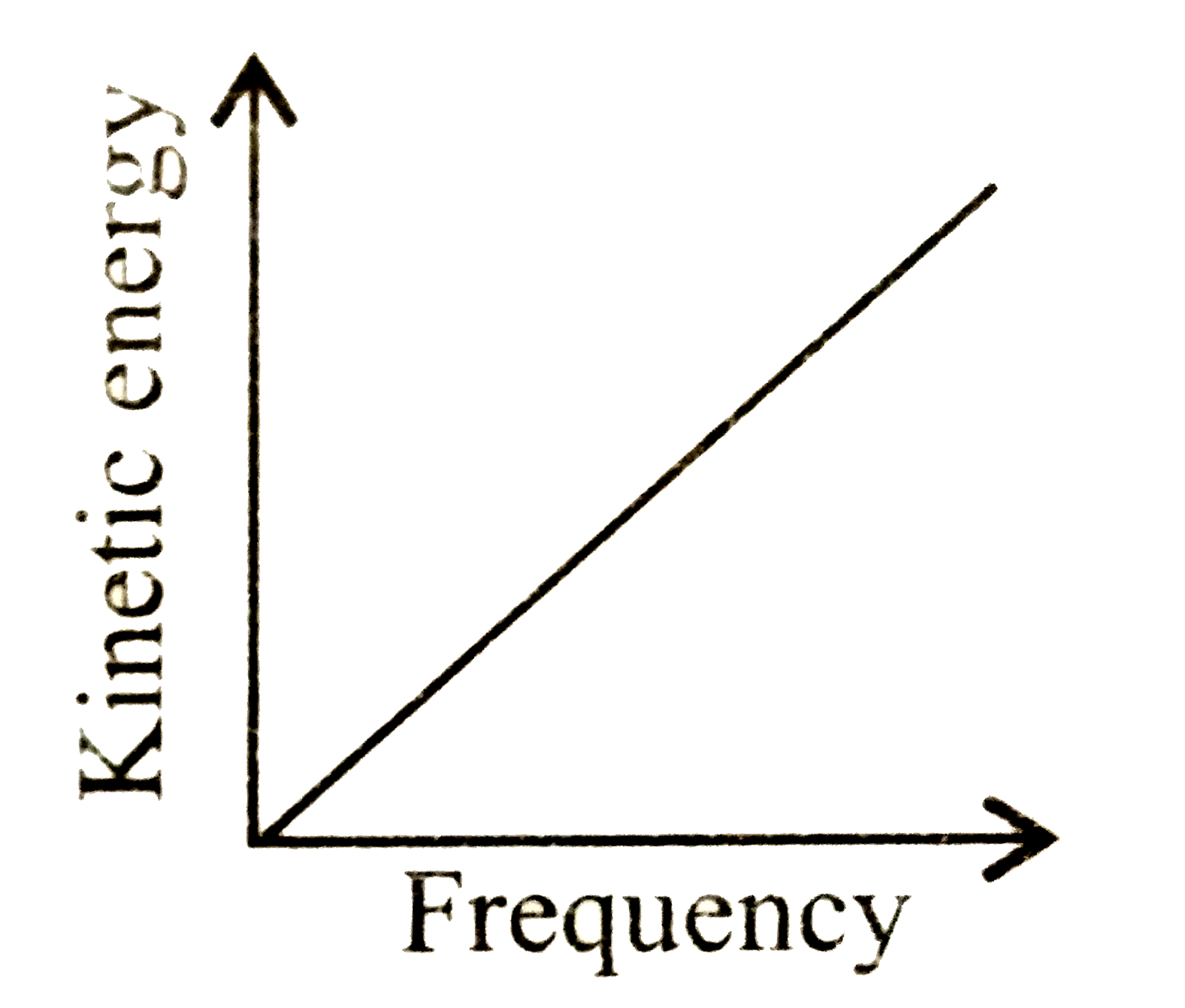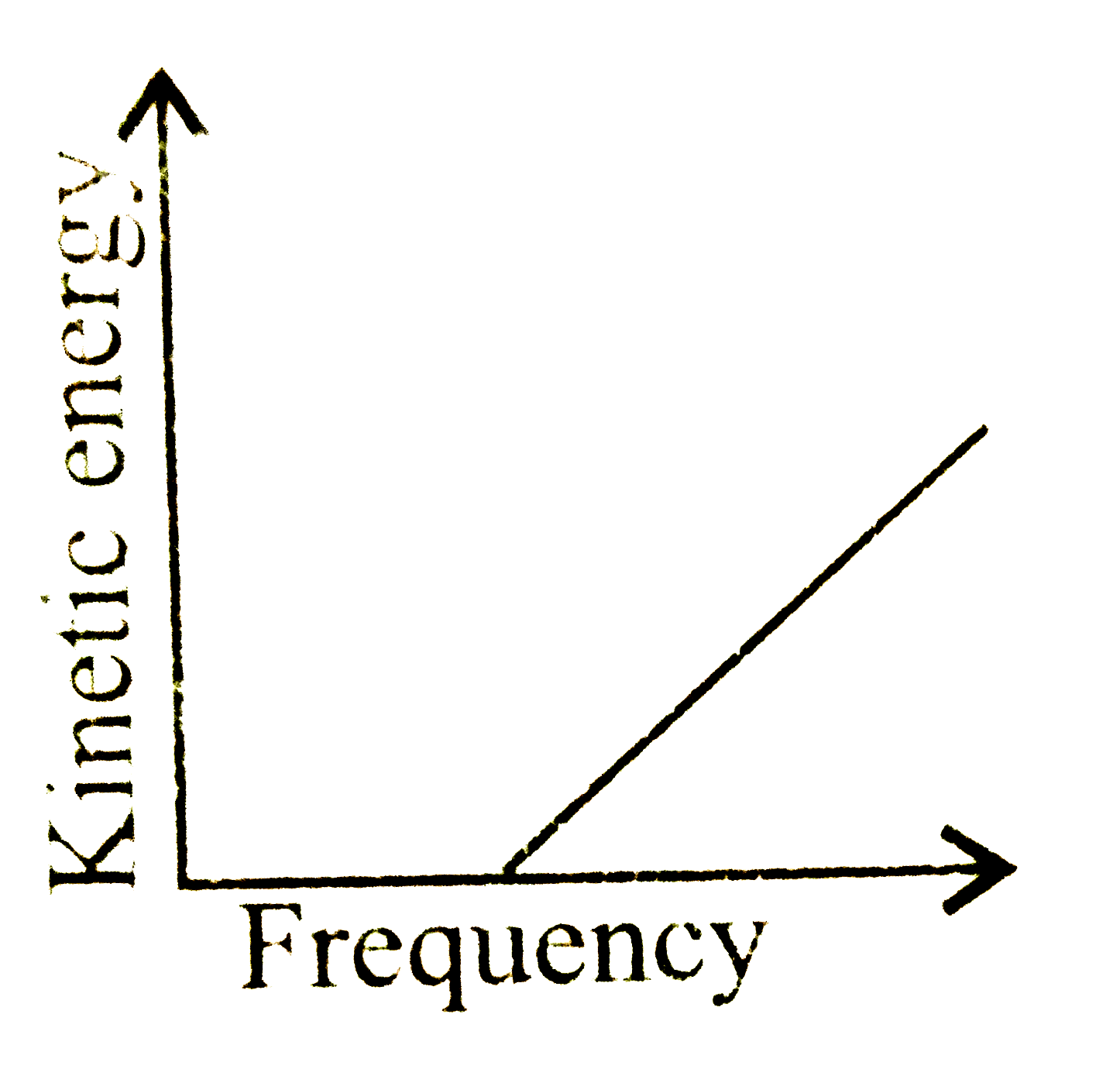The kinetic energy of the photoelectrons depends upon the
Intensity of striking light
Number of photons striking
Frequency of striking light
Number of photoelectrons ejected
The correct Answer is:3
To solve the question regarding the dependence of the kinetic energy of photoelectrons, we can break it down into a step-by-step explanation.
Step 1: Understand the Photoelectric Effect
The photoelectric effect describes the phenomenon where electrons are ejected from a material (usually a metal) when it is exposed to light of sufficient frequency.
Hint: Remember that the photoelectric effect is a key concept in quantum mechanics and relates to how light interacts with matter.
Step 2: Identify the Key Formula
The kinetic energy (KE) of the emitted photoelectrons can be expressed using the equation:
KEmax=hν−hν0
Where:
- KEmax is the maximum kinetic energy of the photoelectrons.
- h is Planck's constant.
- ν is the frequency of the incident light.
- ν0 is the threshold frequency of the material.
Hint: Focus on the terms in the equation and how they relate to each other.
Step 3: Analyze the Components
From the equation, we can see that:
- The term hν represents the energy of the incoming photons.
- The term hν0 represents the minimum energy required to eject an electron from the material.
Hint: Consider how changing the frequency of the incoming light affects the kinetic energy of the emitted electrons.
Step 4: Determine the Dependence on Frequency
The kinetic energy of the photoelectrons is directly proportional to the frequency of the incident light (ν). As the frequency increases, the kinetic energy of the emitted electrons increases, provided that the frequency is above the threshold frequency (ν0).
Hint: Think about what happens when you increase the frequency of the light while keeping the intensity constant.
Step 5: Evaluate Other Factors
- Intensity of Light: The intensity of light relates to the number of photons striking the surface, but it does not affect the energy of each individual photon. Therefore, it does not directly influence the kinetic energy of the photoelectrons.
- Number of Photons: While the number of photons can affect how many electrons are ejected, it does not change the kinetic energy of the individual photoelectrons.
- Threshold Frequency: This is a fixed property of the material and does not change with the light source.
Hint: Differentiate between factors that affect the number of emitted electrons versus those that affect their kinetic energy.
Conclusion
The kinetic energy of the photoelectrons primarily depends on the frequency of the incident light. Therefore, the correct answer is that the kinetic energy of the photoelectrons depends on the frequency of the striking light.
Final Answer: The kinetic energy of the photoelectrons depends on the frequency of the striking light.
The photoelectric effect describes the phenomenon where electrons are ejected from a material (usually a metal) when it is exposed to light of sufficient frequency.
The kinetic energy (KE) of the emitted photoelectrons can be expressed using the equation:
KEmax=hν−hν0
Where:
- KEmax is the maximum kinetic energy of the photoelectrons.
- h is Planck's constant.
- ν is the frequency of the incident light.
- ν0 is the threshold frequency of the material.
From the equation, we can see that:
- The term hν represents the energy of the incoming photons.
- The term hν0 represents the minimum energy required to eject an electron from the material.
The kinetic energy of the photoelectrons is directly proportional to the frequency of the incident light (ν). As the frequency increases, the kinetic energy of the emitted electrons increases, provided that the frequency is above the threshold frequency (ν0).
- Intensity of Light: The intensity of light relates to the number of photons striking the surface, but it does not affect the energy of each individual photon. Therefore, it does not directly influence the kinetic energy of the photoelectrons.
- Number of Photons: While the number of photons can affect how many electrons are ejected, it does not change the kinetic energy of the individual photoelectrons.
- Threshold Frequency: This is a fixed property of the material and does not change with the light source.
The kinetic energy of the photoelectrons primarily depends on the frequency of the incident light. Therefore, the correct answer is that the kinetic energy of the photoelectrons depends on the frequency of the striking light.
Topper's Solved these Questions
- STRUCTURE OF ATOM BOOK - AAKASH INSTITUTE ENGLISHCHAPTER - STRUCTURE OF ATOM EXERCISE - ASSIGNMENT ( SECTION -B) Objective Type Questions (One option is correct)
38 Videos
- STRUCTURE OF ATOM BOOK - AAKASH INSTITUTE ENGLISHCHAPTER - STRUCTURE OF ATOM EXERCISE - ASSIGNMENT ( SECTION -C) Objective Type Questions (More than one options are correct)
15 Videos
- STRUCTURE OF ATOM BOOK - AAKASH INSTITUTE ENGLISHCHAPTER - STRUCTURE OF ATOM EXERCISE - Try Yourself
40 Videos
- STRUCTURE OF ATOMBOOK - AAKASH INSTITUTE ENGLISHCHAPTER - STRUCTURE OF ATOMEXERCISE - ASSIGNMENT (SECTION -D) Assertion-Reason Type Questions
15 Videos
- SURFACE CHEMISTRY BOOK - AAKASH INSTITUTE ENGLISHCHAPTER - SURFACE CHEMISTRY EXERCISE - Assignment Section - C (Assertion - Reason type questions)
10 Videos
Similar Questions
Knowledge Check
Assertion : All the photoelectrons emitted from the matal do not have the same energy.
Reason : The maximum kinetic energy of photoelectrons depends on the light soures and the emitted plate material.AIf both assertion and reason are true and reason is the correct explanation of assertion.BIf both assertion and reason are true but reason is not the correct explanation of assertion.CIf assertion is true but reason is false.DIf both assertion and reason are false.According to Einstein's photoelectric equation , the graph between the kinetic energy of photoelectrons ejected and the frequency of incident radiation is
A B
B C
C D
D
The kinetic energy of one mole of any gas depends upon
View SolutionThe maximum kinetic energy of the photoelectrons veries
View SolutionWhen an electro-magnetic radiation is incident on the surface of metal, maximum kinetic energy of photoelectron depends on-
View SolutionThe kinetic energy of photoelectrons emitted by a photosensitive surface depends on the internsity of the incident radiation
View SolutionAccording to Einstein's photoelectric equation, the graph between kinetic energy of photoelectrons ejected and the frequency of the incident radiation is :
View SolutionAssertion: Stopping potential depends upon the frequency of incident light but is independent of the intensity of the light.
Reason :The maximum kinetic energy of the photoclectrons is proportional to stopping potential
View Solution
